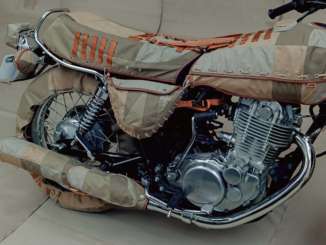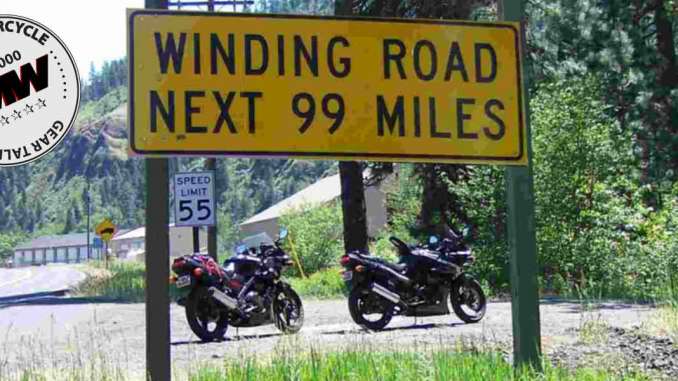
If you’re reading this, you’re most likely in the beginning stages of planning a long-distance ride. Congratulations! Long distance riding is one of the most rewarding things you can do with your bike. It’s surreal to climb off your motorcycle in the parking lot of a lodge 1,000 miles from home. Here are ten of our best tips to make your trip successful and rewarding.
“how can something so small take me so far?’ But it did, and it feels just grand.”
Gear Talk 3 – 10 Tips to Make your Long Distance Ride a Success
By Eric Leaverton
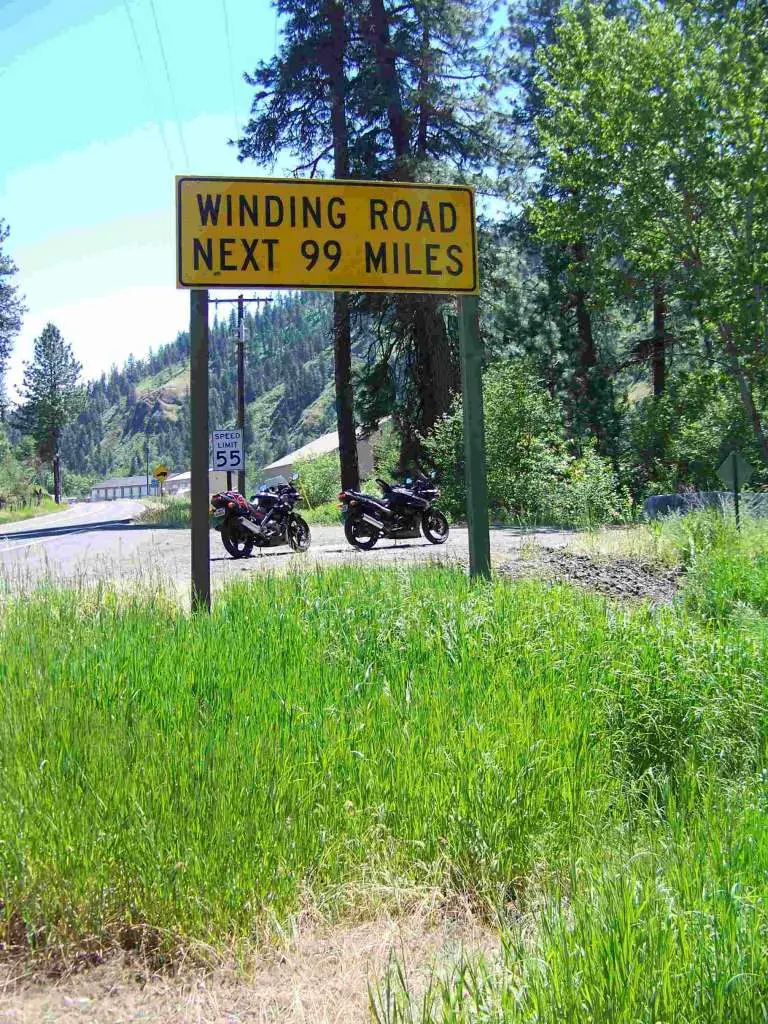
1. STAY WARM
I know getting too hot can be uncomfortable, and peeling a leather jacket off your sweaty arms is never pleasant. But I also know I’ve never been so warm while riding that I had to pull over immediately and take off some layers. I can’t say the same for the cold. I’ve pulled over a number of times to add layers, often out of desperate necessity, but by then it was too late. Take a chill in the first half-hour of your ride and you’ll be cold until after lunch. So wear your layers at the outset and take them off as you need to, rather than the other way around.
I should take my own advice, I always get this one wrong. If you’ve ever taken the time to read my blog in the Total Motorcycle Forums, two comments almost always feature in my ride reports. First, we left late. Second, I got cold. It’s just never as warm in the mornings as I think it’s going to be, and as much long distance riding as we do you’d think I’d learn this one. But nope, I’ll stuff my removable sleeves in the backpack with the rest of my stuff and in fifty miles I’m pulling over to get it. I’m getting better these days though.
There’s also an incredibly easy strategy to ensure you don’t get too hot when you’re layered up. Read on…
2. STAY HYDRATED
Giving your body a steady supply of water throughout the day has numerous benefits, even when you’re not long distance riding.
First, it will help keep you cool. You can’t start digesting food or drink until it’s warmed up to normal body temperature, and your body disperses metabolic heat to your core to do this. If your body is constantly channeling heat to your digestive tract, the rest of you will feel considerably cooler.
You can apply this tip elsewhere in your life too. I used to supervise in a building that was uncomfortably hot all the time, and I made it my practice to drink a steady supply of cool water throughout the day. While my employees were bringing in ice packs or hooking up office fans, I was shivering in my office.
Second, being well hydrated is good for your circulation. It can improve your mental acuity, vision, and reflexes, which will all make you a safer rider. This will also stave off fatigue and give you the stamina you need to keep up with your schedule.
Of course, if you drink a liter of water at every stop there’s going to be five times as many stops right? Very true, and I’m not suggesting that you drink that much, but keep a bottle of water handy and get a good swig of it every time you stop for any reason, even if you don’t feel thirsty.
The benefits of good hydration have a cumulative effect too, so you should front-load your hydration. Start drinking more water a couple of days before you intend to leave and you’ll be in great shape to head out when you do.
Of course, if you’re a fitness buff who drinks water daily, you might not have worry so much about this one.
3. STAY HUNGRY
This one weird tip goes against the conventional wisdom you may have heard or seen, and I have read numerous articles myself that suggest the opposite. Those articles recommend eating filling meals and even snacking when you’re long distance riding to “keep your energy up”. In my experience though, long distance riding is more mentally exhausting than physically draining.
There are exceptions, and what most readily springs to mind is riding in high winds or riding off-road. But a long ride on clean asphalt in fair weather is largely a mental exercise, and in that situation being a little hungry will sharpen your mind.
We all know what a food coma feels like. Just picture the last time you hit up your favorite greasy spoon and really had a proper breakfast. Three egg omelette, buttermilk pancakes with syrup, hash browns with that delicious hot sauce, maybe even some grits. You feel that heady, groggy weight in your head as you were reading that? Yeah. Not ideal for climbing on a bike.
Now I’m not suggesting you starve yourself, of course. Just keep breakfast and lunch fairly light and save your large meal for when you’re done for the day. We’ll typically start a day’s ride with a single egg and another protein, either bacon or sausage, and coffee. For a roadside lunch, cheeses and lunch meats make an excellent choice. They’re also readily available in the cold cases of most gas stations, which saves room in our luggage.
And for dinner? Well, I don’t where you’re riding to, but if it’s anywhere near Missoula, Montana, we’d like to recommend The Stone of Accord. Get the Corned Beef Fettuccine Alfredo.
4. EAR PROTECTION
We have found no single more effective way to reduce riding fatigue than wearing ear protection. I genuinely believe this is the single most potent tip here. Even if you only wear them for long distance riding, get some good earplugs and use them.
I think our own reaction to this advice ten years ago would have been much like the one you’re having now. We were young, we had loud pipes, we were passionate about the open road and why would we ever want to mute it’s music?
Believe me, wind noise isn’t music. It’s a malevolent wyrm, winding it’s way through your mind and burrowing into your psyche. You think the kink in your neck and your sore shoulders are from your stock saddle, or not enough pullback in your bars? They’re not. They’re from clenching up with stress over the mental assault you’re subjecting yourself to. If you don’t believe me, spend an hour standing directly in front of a box fan on it’s highest setting.
5. PLAN AHEAD
In the era of Google Maps, there is no excuse for not having foreknowledge about your route. Even if you’re planning some kind of crazy, free-form walkabout, you should still have as many details as you can about the parts you’re sure of.
Let me share a quick story with you. I few years ago, Carrie and I went for a quick two-day excursion to a nearby casino town. I was riding a Vulcan 800 and Carrie was on a Shadow 750, and both bikes could reliably do 90 to 100 miles on a full tank of fuel. Any more than that though, and it got sketchy.
One leg of our trip was 157 miles, from the town of Snowville, Utah, to our destination of Wendover, Nevada. We knew when we planned the trip that 157 miles was too far for a single tank, so we planned a fuel stop in the small town of Montello, Nevada. A quick internet search confirmed there was a gas station in the town, no matter how small, and we decided that was enough.
Now, how late would you assume a small-town gas station to be open on a Saturday evening in April? 7pm? 8pm? That’s what we assumed. Well, we hit town at 6:40pm, still bright and warm outside, and discovered the lone gas station shut it’s doors at 5:00. Saturday evenings are Cowboy Karaoke at the lone bar in town, and everyone shuts their doors early to get ready. We ended up paying about $5.00 a gallon for lawnmower gas out of the bed of a guys truck.
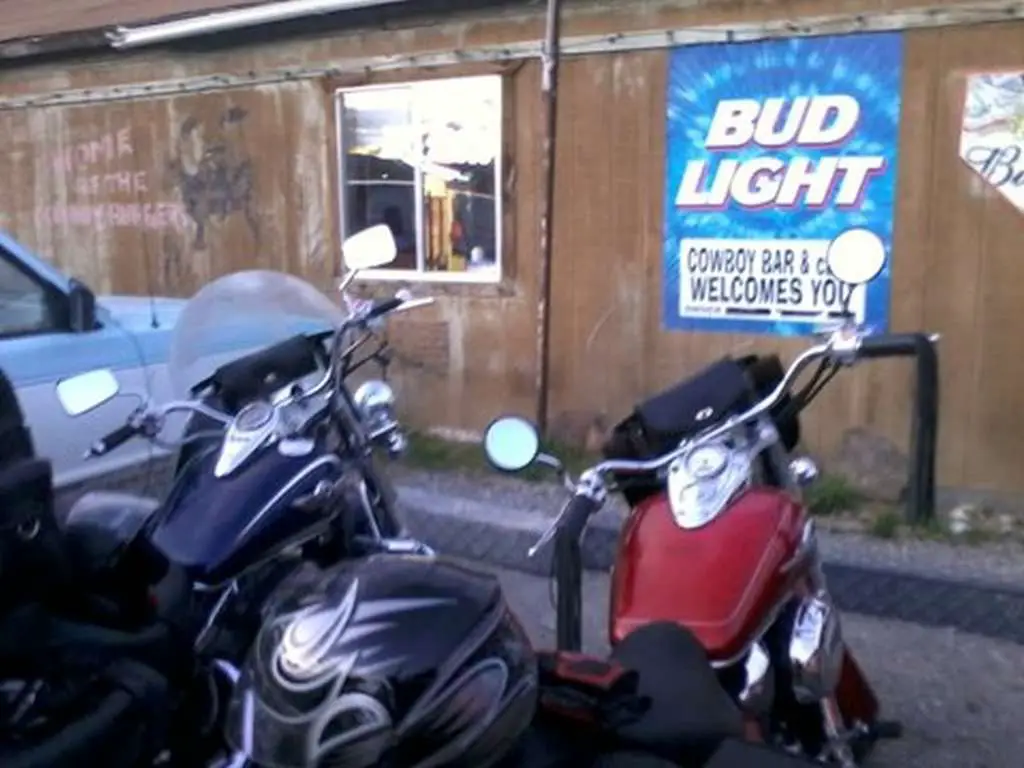
Since then our long distance riding has taken us through dozens of small towns, and any time we’ve had to plan a fuel stop at one of them I’ve called ahead to find out what their hours are. This is especially important if you’re planning a ride over a holiday weekend. Do your research and plan ahead.
This doesn’t just apply to fuel stops either. If any part of your route looks questionable, scout ahead with Google Maps. Look for unpaved sections or poor surface conditions. Check on your accommodations too. Even if you booked a hotel on a travel site, call directly to ask specific questions about your room. We like to make sure our rooms are close to an entrance and have a view of the parking lot, so we can keep an eye on our bikes.
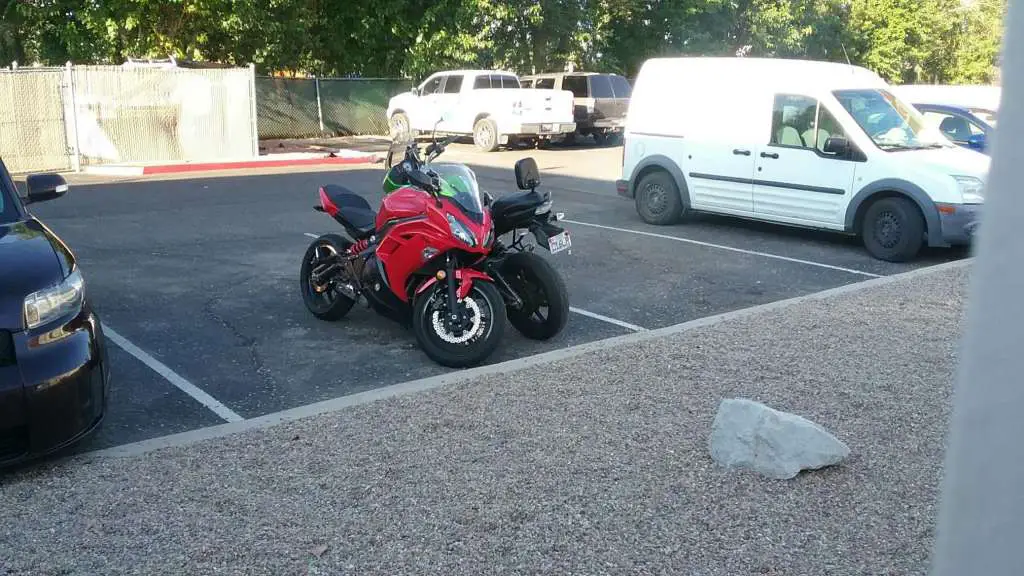
6. PACK FOR THE EVENT
Always keep in mind where you’re going and what you intend to do when you get there. If the only point of the trip is the riding, great! Nothing extra to pack. But maybe you’re attending a convention, a graduation, taking a tour of a museum, or something else. In that case, you may need an entirely different wardrobe when you reach your destination. Don’t forget your swimwear too.
One special consideration, especially for women, is shoes. Don’t underestimate how uncomfortable your riding footwear will get after an hour of walking in them. Plan ahead. Either make space for an extra pair of shoes in your luggage, or select a pair that will be comfortable on and off the bike.

Finally, if the destination is more important than the ride, let it be. If you’re struggling to accommodate the ride and a complicated event, maybe give up and take the car. We once met a couple in a hotel pool who had spent three days on the road to attend a wedding. A surprise rain storm on the second day soiled all of their formal clothes for the event, and they attended the wedding in their road clothes. Die-hard for sure and hats off. But sometimes, it might be better to reschedule your ride.
7. TRAVEL LIGHT
Unless you’re traveling on a fully outfitted touring bike, space will always be at a premium. Deciding what to bring with you and how much of it can make or break a motorcycle adventure. This is especially true when you’re going to be gone for multiple days.

We usually pack one outfit for riding in, and one more for wearing “around town” while we’re at our stops. This doesn’t include underthings of course, always pack enough of those for fresh changes every morning! But jeans and shirts can usually stand two or three wearings before things start to get sketchy. If you’re really concerned or you’re planning several days on the road, most motels have coin-op laundries you can use. We even know one couple that visits the local secondhand store at each of their stops. They buy outfits off the rack and donate the previous days outfits on the spot!
Lastly, it’s always a good idea to leave to some spare space in your luggage. You never know when some random trinket or memento will call out to you. For our part, we collect coffee mugs.

8. ASSUME YOUR MILEAGE WILL BE POOR
We all know that equation, right? You’re planning to do some long distance riding, so you jump on Google Maps with your calculator nearby and get your maths on. It goes something like this. (TOTAL MILES/AVG MPG = GALLONS OF FUEL) x (THE LAST PER-GALLON PRICE WE CAN REMEMBER) = FUEL COST. It’s also how we calculate where our fuel stops will be and how to budget our time for the trip.
There’s lots of places this can fail you, not the least of which is regional fuel prices. That’s part of PLAN AHEAD. But where this most often falls short is our own estimation of our fuel mileage.
There’s a lot of reasons for that, the most common of which is just time. We’re most attune to our bikes mileage when we first buy it, so those first few tanks of gas we’re watching real close to see what our mileage is like. Once we have our number, we set it down in stone in our head and it becomes Our Fuel Mileage.
But, air filters get dirty, chains lose tension, and regular wear and tear takes its toll on motor components. Maintenance helps, but maintenance isn’t overhaul, and after a few months your mileage isn’t what it was. Maybe it’s 95%? 80%? Combine that with with a 4 mph headwind, and you’re calculating your mileage 20 or 30% better than it is. So account for that when you bust out your calculator. Knock 25-30% off your mileage when you’re calculating you ranges and fuel costs. If it turns out you were right all along, blow the overage on something fun.
9. CHECK YOUR EQUIPMENT
This should be part of your regular routine, but we all get lazy sometimes. Make sure in the days leading up to your trip that you get caught up. Adjust your chain, make sure your coolant reservoir is full, and check that all your lights and signals are working. Track down the source of that rattle you’ve been noticing and repair it.
And it’s not just your bike. Look over your clothing and helmet for any obvious problems. Clean your visor and install that app on your phone to fix the volume control on your headset. Replace your boot laces if they’ve been threatening to snap, and if your helmet has removable liners pull them out and launder them. Don’t neglect to check straps, buckles and other fasteners too. We were all the way to the freeway to start a 300 mile trip once before we realized the latch on our sons helmet strap had failed. We had to turn around and head home for a different lid.
And keep it up while you’re out on the road. Long distance riding offers a lot more opportunities than normal to miss something, especially when you’re strapping down bags and racks. Walk around your bike at every stop. Make sure you snapped the closures on your saddle bags and secured the tail ends of any straps. Make sure your fuel petcock is in the correct position, and look for any new leaks or other signs of mechanical issues. Do it every time, at every stop.
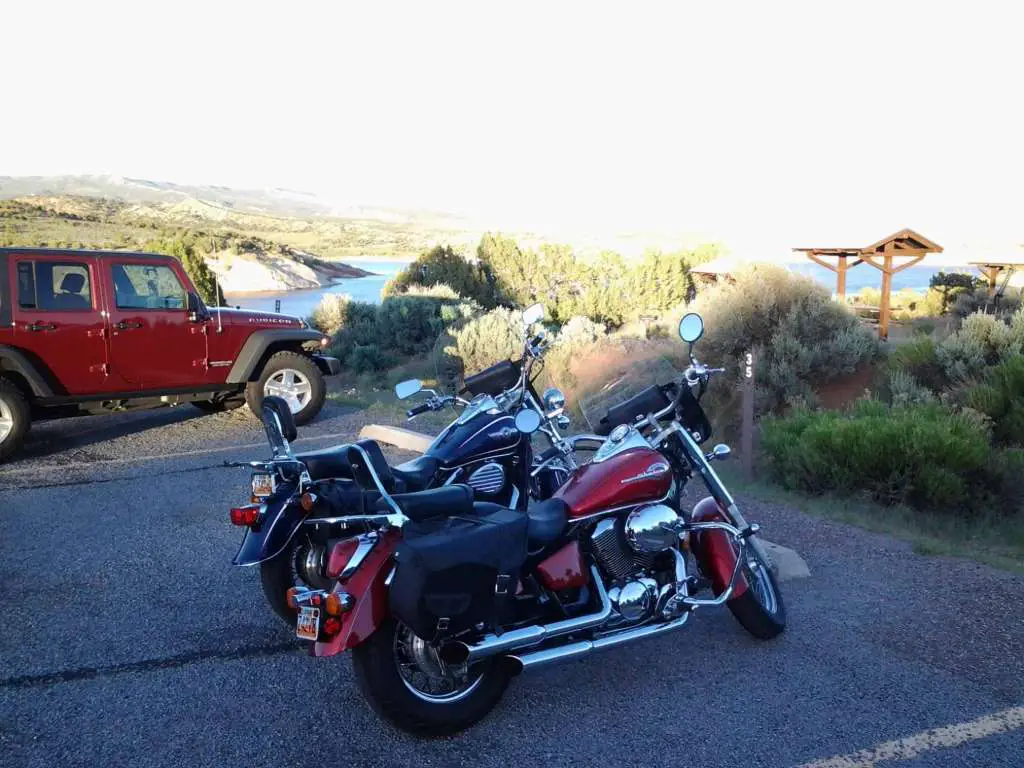
10. LINE YOUR POCKETS
You will spend more money than you thought you would.
Say it with me.
“I WILL SPEND MORE MONEY THAN I THOUGHT I WOULD.”
Unless you’re one of those ultra-cautious types that budgets for two new tires and a 200 mile tow, chances are you will exceed your estimated budget. Even if you planned for poor fuel mileage, higher gas prices at your destination, souvenirs for your kids and room service, you’ll still have some unplanned expenses. It could be an emergency, a great deal you find in an antique shop, or a speeding ticket you have to pay for on the spot. For us, it was a surprise $200 deposit for our hotel room. We got it back, of course, but if we hadn’t had it to spend, that particular trip would have got complicated. Whatever the reason is, you need to have some extra funds on hand for long distance riding.
Make allowances for it. Pay extra on your credit card balances the month before, so you can dip into them if you have to. If you normally blow $100 every month on a nice dinner somewhere, plan to do it during your trip. If you’ve been meaning to sell something, try to get it sold before you leave. Have as much extra cash flow on hand as you can when you leave. If disaster strikes, you’ll be glad your wad is that much thicker.

Do you have any fun, exciting to stories to tell from your own adventures? You should join the Forums and tell us about them! We’d love to hear from you!
Did you like this article? We really hope so. We strive to bring you informative, interesting, useful content so you, our reader, can make informed decisions. I know this all sounds like a pretty sweet gig. Free gear, travel, fame and accolades. Right? In actuality though, it’s a pretty expensive endeavor. Hotel stays, fuel, and other travel expenses add up fast. There’s also video and photography equipment to buy and maintain, software subscriptions, hardware maintenance and internet bandwidth to pay for. Not that we mind, it’s our pleasure. But if you enjoy our content and find it useful, please consider subscribing to help improve and amplify our impact. Subscriptions start at only $1 a month, and you’ll have the pleasure of knowing that 100% of your donation is going to generate content for you and your fellow riders. And we will never sell your information or charge a fee for our services. Sign up HERE.






